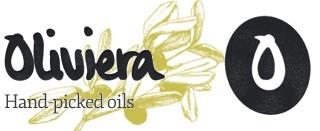FAQ
Answering your olive oil questions
Knowing most of you, perhaps eager to learn more about olive oil but short on time, I’ll sum it up for you in the following FAQ. My hope is that it will satisfy your curiosity on the golden commodity.
Please do not hesitate to ask any question that will help you understanding, using or tasting olive oil.
How to sample olive oils ?
Pour a few drops in a small warm spoon, and “slurp” it between your teeth. This will release all the fruitiness of the oil, and will allow you to better chose the oils more fit to your taste. You could experience a peppery after effect, which could be interpreted as higher acidity. It is not. All oils out of the mill will give you that feeling. It is beleived that a higher vitamin E content is the cause of this peppery “coughing” bout.
A small piece of bread dipped in oil is an alternative option, for those that resent the “slurping”!
Thank you Alain for this question.
What are the health benefits?
Once you have read all the health benefits of olive oil, (google health + olive oil) you’ll wonder how come it is not reimbursed by social security.
How to best keep olive oil?
We ship oil in metalic containers, as their weight is 1/10th of glass bottles. If you will not be using the oil within 3 to 6 months, better fill it in dark glass bottles. (Recycled wine bottles?)
Always, always, keep away from heat (ovens, direct sunlight, etc,) and preferably around 18° C (75° F) temperature.
Why does my 1 liter bottle weigh only 940 grams?
The density of olive oil is 916 grams per 1 liter. Thus the weight of your liter is 940 grams, including the can.
What is the best olive oil in the world?
I always answer, the one on my salad!!
Which oil should I buy?
Taste. Then it becomes your choice. Alternatively, take a risk with us! (ad)
Which is the world’s biggest producer?
Spain, twice as big as the second Italy, then Greece… Europe represents 80% of world olive oil production.
GT Date
Vague date imposed by the industry. (one and a half year from the day it is bottled) But when was it pressed? We recommend using the olive oil within the crop year. Our oils are always from the most recent crop.
Crop Year
12 months after it is picked and pressed (usually within 24hours). This is our GT date.
Infused Oils
Why not, if the infusion occurs during the pressing process of the olives. Otherwise and best by far, DIY with whatever you want to put in it. In small quantities, and only for immediate use.
Cold Pressed
Below 30° C during the pressing process. Heating further (to get a higher output) will affect the taste negatively. ALL EVOOs are now cold pressed.
IGP
Like AOP, and AOC, and DOC, are geographic indications which aim to protect local producers and try to exclude cheaters, sometimes unsuccessfully.
Organic
Of course. Olive oil is a preserver, and it will preserve pesticides if used in the grove.
Extra Virgin
Extra virgin olive oil is required to have no more than 0.8% free acidity and is considered to have favorable flavor characteristics. Basic description of the term. Some higher acidity oils (not more than 1.8%) are excellent.
Virgin only Olive Oil
Oils who’s acidity level is between .8% and 1.8%. Some are excellent, like the “Fruité Noire” which we sell as it is fresh from this year’s production, and others could be old, denatured or even rancid. In all cases, it should be never stored more than the crop year. USE THEM WITHIN THE CROP YEAR!! This rule applies to all our oils.
Hope this answers your question, Johnny
Varieties
About 250 varieties of olives worldwide, but a lot of duplication due to languages, misnomers, and few olive fanatics who claim exclusively hybridized varieties. Never, ever disagree with them!
Which olive oil should I buy?
Taste. Then it becomes your choice. Alternatively, take a risk with us! (ad)
How do I pair olive oils with foods?
Nadim to the rescue!
